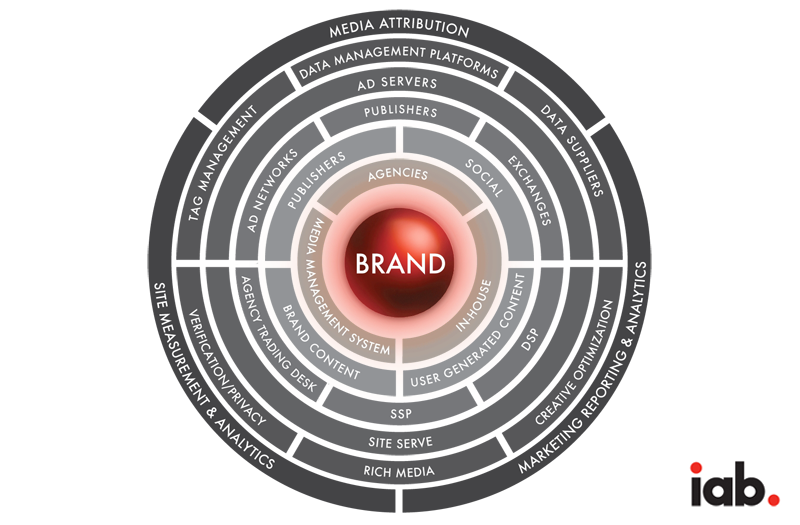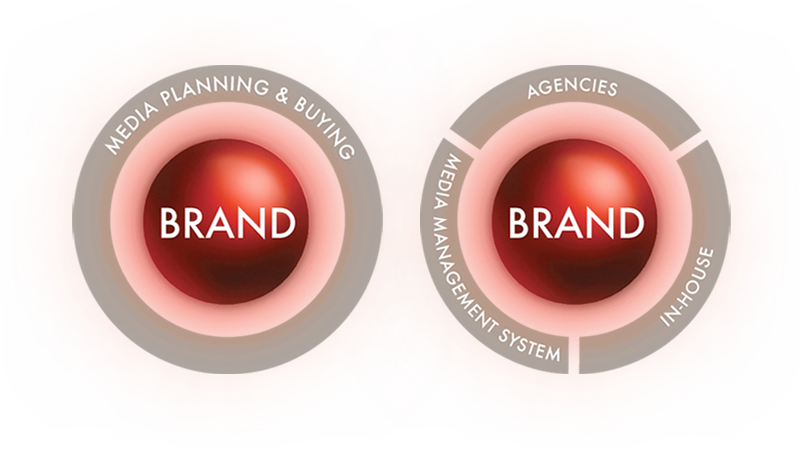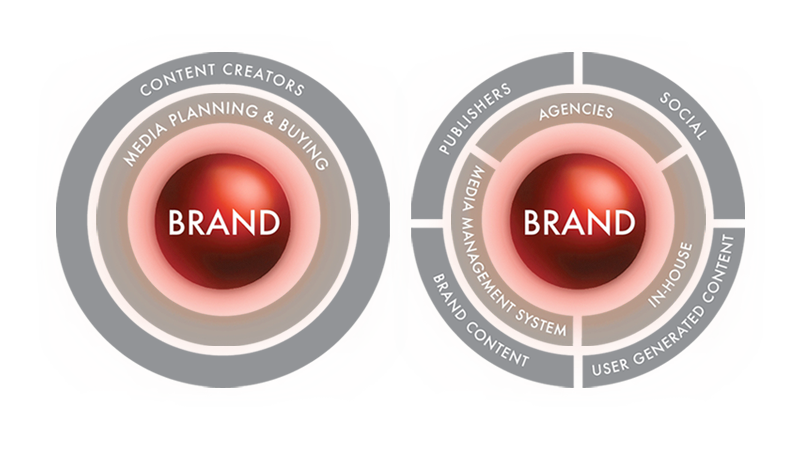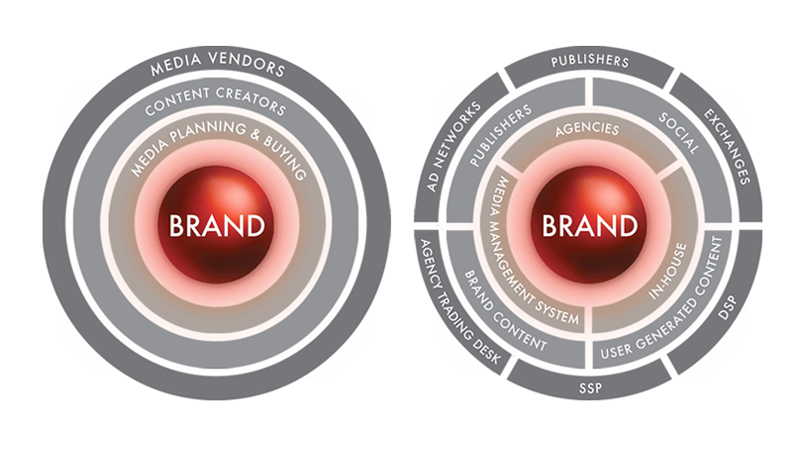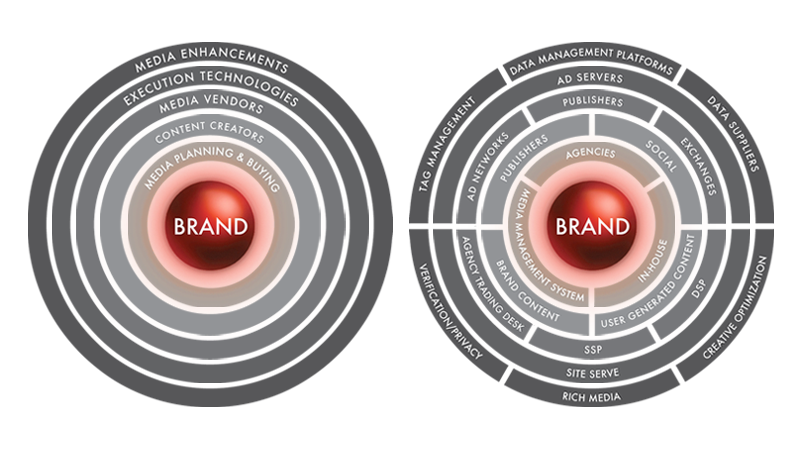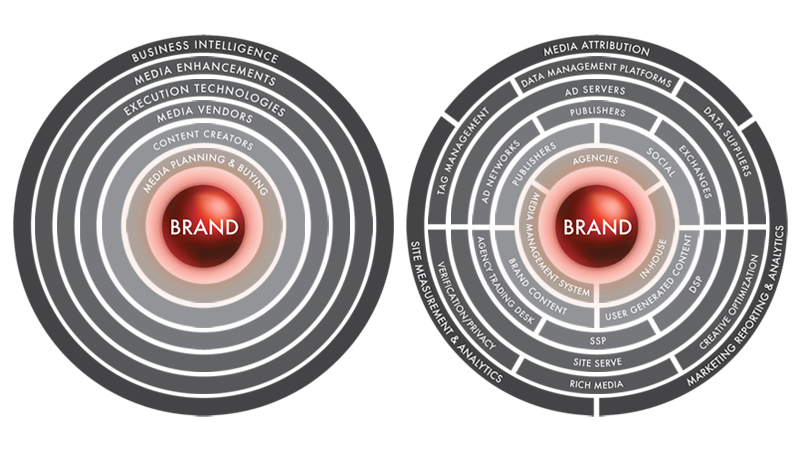The Definitive Guide To The Digital Display Ad Ecosystem
Learn the intricacies of how advertising messages are delivered to consumers in our digital advertising ecosystem as columnist Peter Minnium explains the path in detail.
The digital advertising ecosystem has often been opportunistically portrayed with excessively complex diagrams featuring hundreds of logos and arrows indicating multiple flows and directions.
These maps justify financial interests in the many different sub-sectors of digital marketing technology, to the benefit of bankers, but they are detrimental to marketers, brands, and agencies. They are simply unhelpful at showing the actual flow of messages from brands to consumers.
By contrast, the Interactive Advertising Bureau’s (IAB) Arena illustration is designed to portray, from a marketer’s perspective, how advertising messages are delivered to consumers in the vibrant and ever-expanding ecosystem of digital advertising. (Disclosure: I work for the IAB.)
Yes, it is complicated — significantly more so than analog media — but it is not so foreign as to be unrecognizable to the trained marketer. Each additional layer merely adds new capabilities to help agencies, publishers, and marketers apply their skills more effectively.
The IAB Arena depicts the ecosystem with six rings, each representing a distinct activity area, encircling the brand upon which all actions are centered.
The six areas of activity are:
- Media Planning and Buying,
- Content Creators,
- Media Vendors,
- Execution Technologies,
- Media Enhancements, and
- Business Intelligence.
Each of these areas is then broken down into sub-segments of activity.
Brands As The Center
The IAB Arena diagram reflects a holistic view of digital advertising that begins with Brands as the center and focal point.
Brands, those keepers of the value systems that inform and enrich the products and services people choose to buy, are the initiators and at the core of digital ad campaigns. All human and technological activity in digital advertising is in service to those brands and emanates from them.
Media Planning & Buying: Choosing Placements
The next ring of activity is devoted to the choices that brands make about where they want to place their advertising.
For some organizations, especially data-driven companies, their capabilities and brand knowledge are so great that they have the resources and appropriate personnel to oversee all of their advertising initiatives internally or “In-House.”
For others, the choice is made to use an agency for creative development, media planning, and media buying, or some combination of all three. Marketers have typically reaped the rewards of agencies’ ability to scale buying for increased cost effectiveness.
Newer entrants into this ring are Media Management Systems. These are sophisticated tools that make it easier for both brands and agencies to manage complex campaigns and brand assets including imagery and data. They take brands out of the era of files, tapes, and spreadsheets and make it faster and more cost efficient to create, plan, buy, analyze, and optimize campaigns.
Content Creators: Media Both Professional & User-Generated
The next layer of the Arena is also about choice; but here, it involves what type of content a marketer decides to place ads with in order to reach consumers.
The age of digital media has broadened content options and enabled entirely new ones. The most well-known and long-standing content sources are publishers: entities that produce some sort of text, images, audio, or video edited by professionals.
Advertisers typically pay a premium for placements with this sort of content due to the established relationships that content has with specific types of consumers. For instance, The Wall Street Journal reaches a loyal audience of business professionals who turn to its news in various forms (print, web, mobile) to keep themselves abreast of financial market movements.
Brand content is that content created and disseminated by brands. In the age of digital media — because traditional media gatekeepers have less power — all brands are now content creators. They manage websites for their corporations, their branded products, and, often, sites specific to various campaigns.
For example, the Dove brand is a part of the Unilever website, has the website Dove.us and also runs the realbeauty.com website that ties into an ongoing ad campaign.
Brand content can also be distributed in in-feed ads, often referred to as “native,” which are paid ads that are so cohesive with the page content, assimilated with the design, and consistent with the user experience, that the viewer simply feels that they belong.
In the age of digital media, any person can be a creator of text, audio, visual, or video. This content typically falls under the umbrella term of “User-Generated Content.”
Both blogging and social sites such as Facebook, Instagram, Blogger, Tumblr and Pheed are typically considered user-generated content. YouTube, the biggest video aggregator online, started out as entirely user-generated content, but has broadened into professionally produced (rights-managed) content, which supplements its large array of cat videos produced by feline enthusiasts the world over.
Social sites are those whose primary focus is communication between groups of approved individuals who are typically part of an ever-expanding social circle.
Sites such as Facebook, Instagram, Pinterest, and Snapchat are places where over 72% of US adults (Pew, 2013) share opinions on events of the day, photos of family and friends, and increasingly, video content.
Media Vendors: Selling & Reselling Advertising Inventory
Because digital offers such a limitless ecosystem of content choices, a layer of ways for content producers to sell various forms of media has evolved along with the growth of the Internet.
The first and most longstanding gatekeepers and sellers of media are Publishers such as ESPN, Time Inc., Condé Nast, and Scripps Networks.
These gatekeepers typically retain a sales staff that goes directly to agency media buying and planning departments to represent the assets, capabilities, and audiences of the content produced. With no fixed amounts of inventory, unlike television and print where strict ratios of ads to content are maintained, publishers have the added challenge in digital of both predicting and selling out their entire advertising inventory.
Ad networks were developed in the late ‘90s to aggregate inventory and package it into buys based on context or audience. This enabled many sites to efficiently reach the dispersed pool of agencies and marketers buying the media and also helped agency buying departments reach their audience goals.
From the marketer and agency perspective, ad networks take on the job of helping in media selection, vetting the quality of the placements, managing the delivery of those ads (called ad serving), and optimizing the placements based on performance for agencies.
Digital Media Exchanges are neutral parties of computer systems where media is traded much like stocks on the NASDAQ. Sellers designate pools of impressions to be sold in the exchange while buyers go into the system, check what is available, and make the transactions that are then automatically fed through ad servers.
Ad exchanges were first created in the mid ‘00s as a way of increasing the efficiency of digital media buying for all parties involved. They also developed the important capability of real-time bidding whereby media sellers designate inventory at no fixed price and buyers bid on the right to purchase that inventory.
Depending on the number of bids and the cost structure, the system determines the winning bidder and then serves the ads accordingly. This form of transacting adds new levels of logic to the buying and selling process. Pricing is based on demand and specific audience and other attributes.
Full-service DSPs, or Demand-Side Platforms, meet the needs of marketers who offer the “demand” for the media. It is equivalent to the buy-side of the business.
Full Service DSPs typically access inventory through exchanges or networks, determine the inventory for given targets available, place the buys, connect into the ad serving, and then optimize the campaigns while ultimately porting the purchase and performance data back to the agency or advertiser for payment and analyses.
Agency Trading Desks or ATDs were developed by large agency holding companies to pool available data from all campaigns placed by a given agency in order to enrich the data value of all agency buys and increase the efficiency and scale in buying digital advertising. Rather than having hundreds of individual client campaigns to execute, the buying could be done through one trading system.
SSPs, or Sell-Side Platforms, are systems that act like exchanges but that have been developed with the needs of publishers in mind. They develop systems that enable content creators to manage the programmatic sale of their inventory as they attempt to get the greatest possible value for the publisher through, for example, data augmentation and effective use of real-time bidding.
In addition, they have developed private marketplaces that enable buyers and sellers to programmatically enter into a one-to-one buy/sell relationship with full transparency of both parties involved.
Execution Technologies
In digital media, once the creative is executed, the plans developed, and the ads purchased, various execution technologies are used to electronically get those ads placed with designated media. Digital has made extraordinary use of technology to simplify processes such as distributing the ads to various media outlets, tracking their specific placements, optimizing them based on performance, and reporting back on actual counts of ads delivered.
Ad servers were initially created to service the needs of networks, which needed uniform reporting of the buying and performance of campaigns with hundreds of site placements on a plan.
All advertising assets are assigned a code that tracks the reach and performance of that ad in such a distributed media ecosystem. Ad servers then evolved to meet the distinct needs of both the buy- and sell-sides.
Site serving is ad serving (delivery) done by a specific media entity. Since it is performed from the perspective of the media entity, functionality such as inventory management is integrated. Third-party ad servers are used by agencies and advertisers to serve ads to a multiplicity of sites and in return receive standardized reporting.
In reality, any astute advertising computer engineering team can build an ad server, but most choose to use a system that is widely accepted and adopted in the industry for simplicity and uniformity of counting and reporting.
Self-serve DSPs are systems that enable any advertiser to purchase advertising inventory. Many companies that offer full, human-powered sales and service have also set up self-serve options. There is no human interaction as all buying processes have been automated.
Some predict that full-service DSPs will be overtaken by self-serve as the sophistication of using these sorts of tools increases.
Media Enhancements: Enriching The Creative, Sharpening The Targets
Digital media has many capabilities and options that are not available in other media. These enhancements are designed to enrich the creative or more precisely target specific audiences that those ads reach.
Rich media is a form of advertising creative that has interaction and visual elements that go beyond standard ads that appear as static images or very simple animated panels. Rich media encompasses, for example, video advertising, ads that appear and disappear automatically, and those that pull down or across with the move of a mouse or finger.
These ads can appear as overlays of content, within standard display units or as takeovers of a page of content that precede the content itself, among many other options. The IAB Rising Stars — formats agreed upon by a critical mass of ad sellers — offer rich media at scale.
Creative Optimization enables marketers to optimize versions of a creative asset (the ad) and automatically serve up the best performing ones. Creative optimization often uses templates for the ad that will automatically enable a switch of images or copy (referred to as “dynamic creative”) to that which has been proven to perform best to achieve whatever metric the advertiser has determined.
While creative personnel work to develop the ad assets, media departments at agencies determine how specifically they would like to target the audience that sees the ads. They work through suppliers that sell them data that they then use to inform buys or overlay on internal data for greater precision.
They could, for instance, purchase data on individuals who have researched cars within a given period of time or those who have completed an action on a specific site that may be relevant to that advertiser. In digital media, so many data signals can contribute to greater ad effectiveness that Data Management Platforms have been developed to handle the processing, integration, and implementation of various data sets.
All of the tracking online is done through a system of tags — computer codes attached to specific ad assets. Given the level of targeting that can be involved in an online campaign along with tags required for search engine optimization, first-party measurement (site-side analytics) and third-party measurement (e.g., comScore, Nielsen), most ads have several tags attached to them.
Tag Management companies automate the task of managing all of the tags that have been developed and often reduce them down to a single tag to speed the delivery of the ad, as multiple tags have been known to increase what in the industry is called latency — slow loading of a web page, which can result in user frustration or abandonment.
The final portion of the ring of ad enhancements is devoted to Ad Verification and Privacy. With the help of providers in these arenas, marketers can be assured that their ads ran precisely where they desired them to run, that the ads were actually seen by a human, not a piece of computer code, and that the environments they were viewed in did not contain any content that the advertisers – or their customers – would find objectionable.
In addition, leading marketing and advertising industry associations including the Association of National Advertisers (ANA), the American Association of Advertising Agencies (4As), and IAB have established a robust, cross industry self-regulatory program and implemented consumer-friendly principles and enforcement standards regarding online behavioral advertising.
A prominent feature of this program is the call for entities engaged in online behavioral advertising to clearly inform consumers about data collection and use practices through enhanced notice.
Business Intelligence: Getting Smarter About Digital Advertising
The outer ring of the IAB Arena is devoted to macro systems that enable each stakeholder in the digital ad ecosystem to more effectively manage their businesses. Site Measurement and Analytics is done from the content creator side of the equation.
Publishers use tags to report back usage metrics on various pages and the content within them. With this data, publishers can determine how to better develop and optimize content to ensure greater engagement with and growth of their audiences.
Media Attribution refers to a level of reporting on media buys where systems help the marketer understand a true, holistic picture of exposure to an entire chain of media that results in the ultimate outcome (e.g., a conversion).
This is in contrast to the now outdated reporting that only took into account the last ad that a person was exposed to and gave credit only to the last impression for driving the conversion (known as last-touch attribution).
The horizon for media attribution is focused on multi-channel measurement, as all media work in conjunction rather than isolation and should be seen accordingly.
Marketing Reporting & Analytics are systems typically customized to the needs of the advertiser or agency. These may include dashboards that enable them to pull in data from a variety of sources, including ad servers, to get a macro view of advertising spend, performance in terms of interaction, and connection to a sale.
In recent years, companies have created suites of tools that simplify processes that used to take months and require small armies of manpower and the creation of endless Excel sheets.
The latest development to hit marketing reporting tools is the integration of both paid advertising tools with social listening tools. These systems ideally help the marketer understand the interaction between paid and earned media and social activity.
The Arena: Open To All Media
As all media is increasingly delivered in on-demand, digital formats, the concepts and businesses that form the rings of the IAB Digital Advertising Arena will apply throughout the industry.
In a very short while, television will include addressable advertising elements, and ads will be served by computer systems that track interaction with the ads rather than just reach. Functions and capabilities developed for what was then known as “digital” will just be “media.”
The IAB Arena serves as a roadmap to the future of how all advertising will ultimately reach and impact consumers. Smart marketers, agencies, and publishers that are investing today to ensure their teams are experts across the Arena will reap benefits far into the future.
Opinions expressed in this article are those of the guest author and not necessarily MarTech. Staff authors are listed here.
Related stories
New on MarTech

